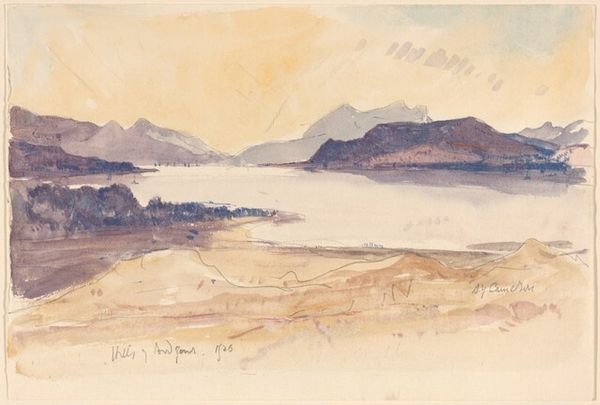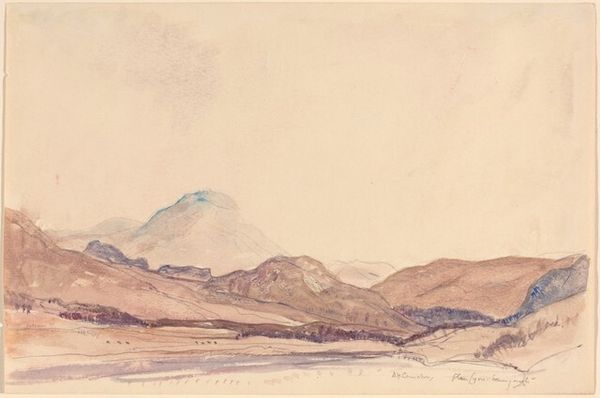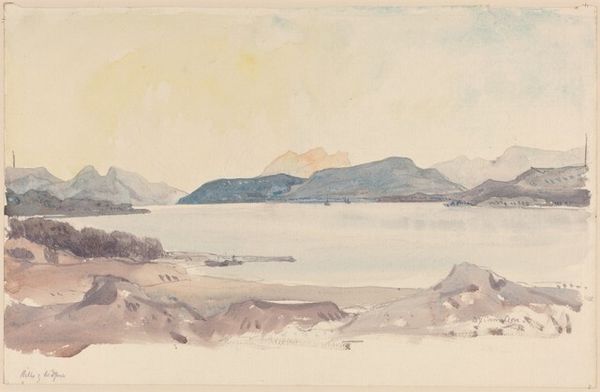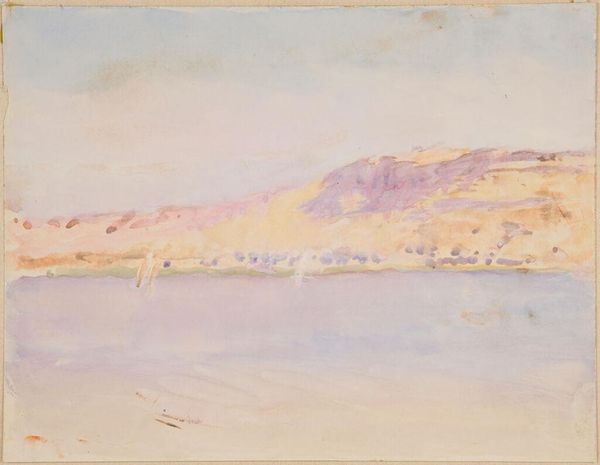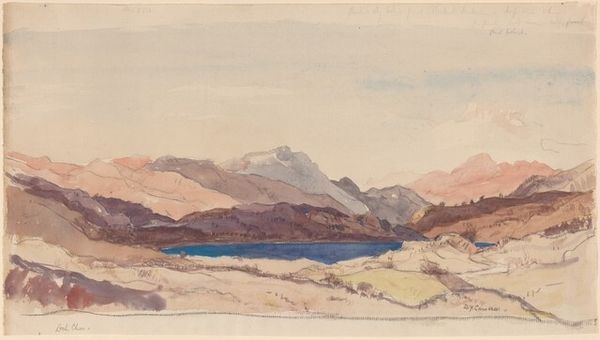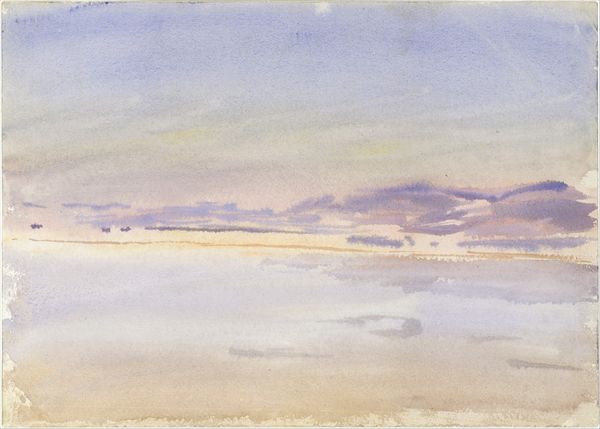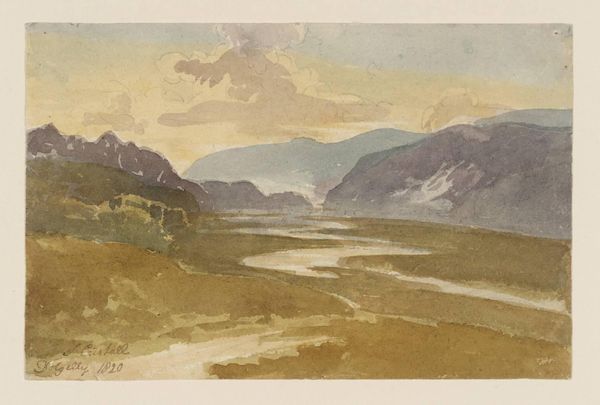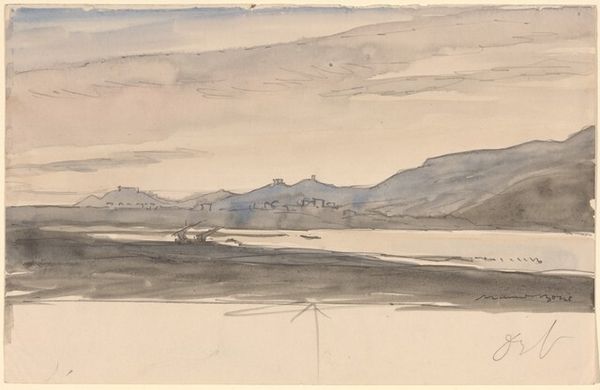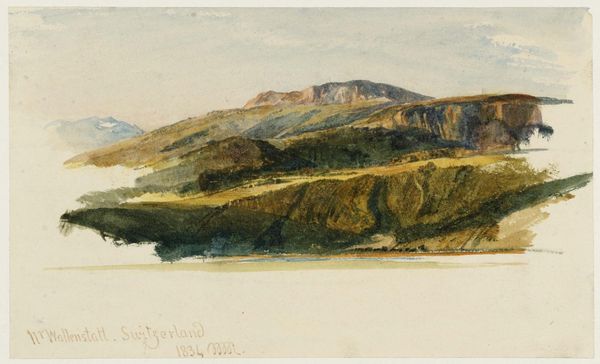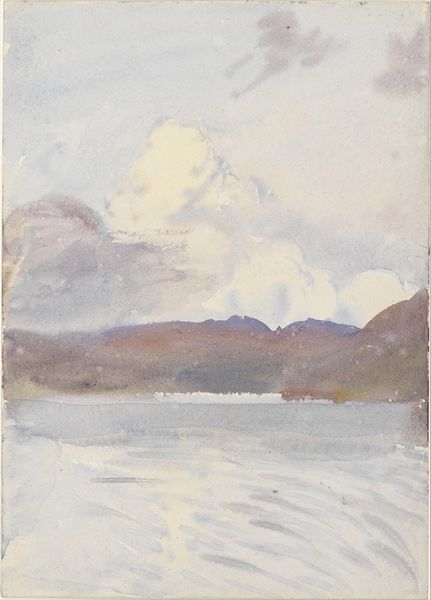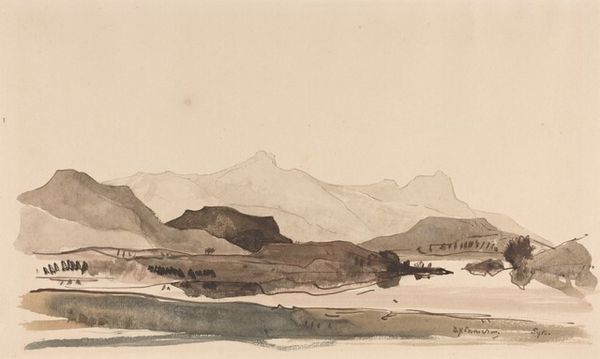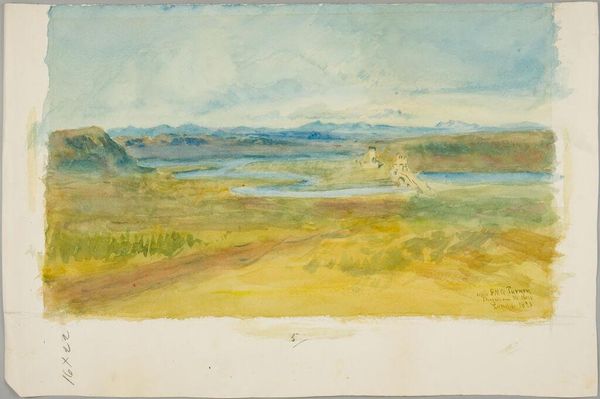
drawing, plein-air, watercolor, pencil
#
drawing
#
plein-air
#
pencil sketch
#
landscape
#
watercolor
#
pencil
#
watercolor
#
realism
Dimensions: overall: 23.3 x 35.2 cm (9 3/16 x 13 7/8 in.)
Copyright: National Gallery of Art: CC0 1.0
Curator: Welcome. Today, we’re examining David Young Cameron's 1913 piece, "Loch Ness," crafted with watercolor and pencil. Editor: Immediately, I’m struck by how muted the colors are—almost washed out, creating a somber, contemplative mood. There’s a palpable sense of stillness in this rendering of the famous loch. Curator: Indeed. Cameron’s deliberate use of light and shadow guides the viewer's eye. Note the subtle layering of washes that defines the depth and volume of the mountains and the expanse of the water. Editor: The Loch Ness mythos inevitably influences my interpretation. Considering the social and cultural fascination surrounding this body of water during the early 20th century, this work might be seen as engaging with themes of the unknown and the persistence of legend. Curator: Interesting. From a formal perspective, it seems that Cameron is exploring tonal values to create spatial relationships. Notice how the composition is anchored by the landmass in the foreground, which gradually leads us to the distant hills, creating a balanced visual structure. Editor: But the ‘balance’ is deceiving, I would say. The unsettling mystique that looms large in that region’s history— the clearances and the loss of cultural tradition…Could it be that he offers us a commentary on the unquiet landscapes of Scottish memory? Curator: The artist could have been attempting to invite a wide interpretation through a combination of pencil drawing and plein-air sensibility by emphasizing its material simplicity and formal structure, instead. Editor: Art never exists in a vacuum. Looking through this lens makes it so clear, doesn’t it? Curator: Perhaps. It's important to maintain multiple avenues through the artwork in our minds simultaneously. I thank you for your contribution to a fuller discussion around formal composition in landscape work. Editor: The pleasure was all mine. Seeing this landscape as more than just shapes has only enhanced my understanding of the human and cultural interactions.
Comments
No comments
Be the first to comment and join the conversation on the ultimate creative platform.
